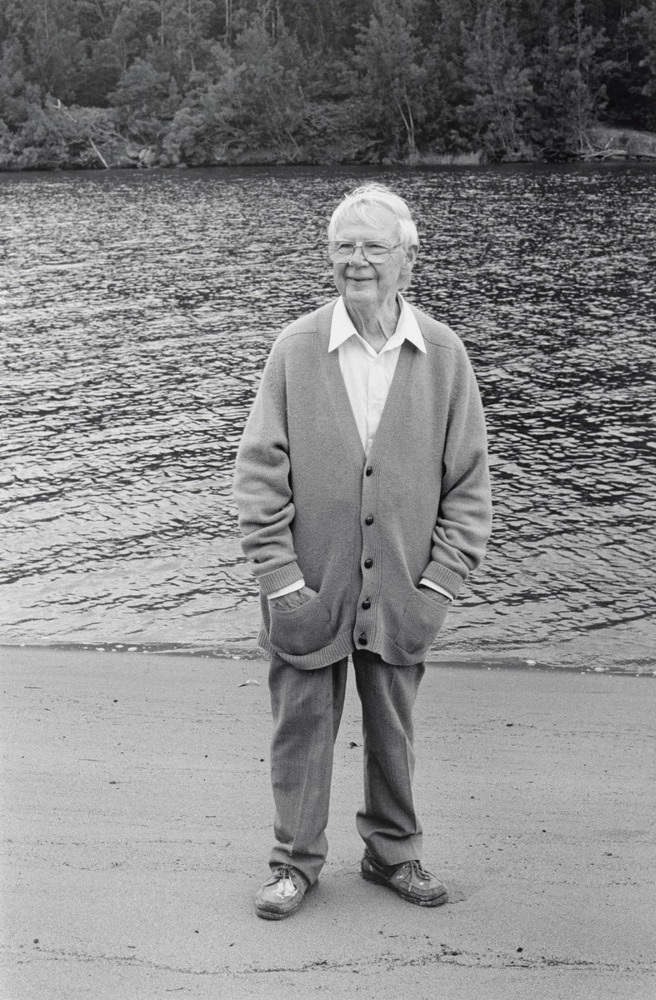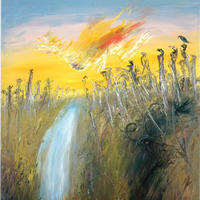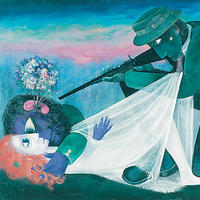More about Arthur Boyd
Works by Arthur Boyd

Sr. Contributor
Arthur Boyd always dismissed the label of “artist” as a “phoney romantic” notion.
To Boyd, creating art was a way to draw attention to important social issues and, in his case, it was usually by means of symbolism.
Both of Boyd’s parents were artists and he grew up in “Open Country," a residence/workplace/meetup spot for creative individuals. So he had a lot of early artistic influences and as a child was excited to take part in the family business. This led to a very young Boyd overfeeding a kiln fire which, his words, “mucked up” the glazing on the pottery for the whole batch. Though this memory stuck with him, he learned from his mistake, and continued to nurture his abilities, becoming the kid in school trading sketches for study help. Boyd initially struggled in school, but his mom intervened and put things on a better path for him. Essentially, she called out his teacher for completely missing her child’s artistic genius. Not long after, one of Boyd’s works was hung in the teacher’s office.
Unfortunately, Boyd wasn’t the only one in his family to have trouble with the pottery kiln’s fire. His father, Merric Boyd, was experimenting with new techniques which involved much hotter flames and ended up burning up a lot more than just the pottery, destroying the whole kiln and everything within. The experience weighed on his father mentally, leading to epilepsy in a time where it still wasn’t medically understood (people thought it was a demonic spirit interference).
Being unable to understand what his father was going through stuck with him. Early hardships such as this left an impression on Boyd, and were perhaps part of what steered his art towards calling attention to injustices he saw around him. Specifically. Boyd often depicts the horrors of war through the use of biblical narratives. Nebuchadnezzar on fire falling over a Waterfall is one such example.
Though his paintings may be better known, Boyd also worked in pottery and ceramics. Even while painting, Boyd still had a potter’s instincts and was known to use his fingers to manipulate the oils in his paintings, similar to how one would shape clay.
After he married Yvonne Lennie, a fellow artist whom he met while serving in the military while he worked for the Cartographic Unit, he moved back to Open Country. There, he founded the Arthur Merric Boyd Pottery Workshop.
Near the end of his life, Boyd was commissioned by Time Magazine to do a painting for the cover of a special edition issue about environmental conservation in Australia, titling the resulting work Earth and Fire. A few years later, the Prime Minister of Australia named him “Australian of the Year” for his accomplishments in art and many years of philanthropy.
Sources
- "Arthur Boyd." Arthur Boyd | Art Gallery of NSW. Accessed April 29, 2021. https://www.artgallery.nsw.gov.au/collection/artists/boyd-arthur/.
- "Arthur Boyd Biography, Life & Quotes." The Art Story. Accessed April 30, 2021. https://www.theartstory.org/artist/boyd-arthur/life-and-legacy/#nav.
- Bungey, Darleen. Arthur Boyd: A Life. Crows Nest, N.S.W.: Allen & Unwin, 2008.
- "Nebuchadnezzar on Fire Falling over a Waterfall, 1966-1968 by Arthur Boyd." Art Gallery of NSW. Accessed April 29, 2021. https://www.artgallery.nsw.gov.au/collection/works/168.1983/#about.
Featured Content
Here is what Wikipedia says about Arthur Boyd
Arthur Merric Bloomfield Boyd AC OBE (24 July 1920 – 24 April 1999) was a leading Australian painter of the middle to late 20th century. Boyd's work ranges from impressionist renderings of Australian landscape to starkly expressionist figuration, and many canvases feature both. Several famous works set Biblical stories against the Australian landscape, such as The Expulsion (1947–48), now at the Art Gallery of New South Wales. Having a strong social conscience, Boyd's work deals with humanitarian issues and universal themes of love, loss and shame.
Boyd was a member of the Antipodeans, a group of Melbourne painters that also included Clifton Pugh, David Boyd, John Brack, Robert Dickerson, John Perceval and Charles Blackman.
The Boyd family line of successive and connective artists includes painters, sculptors, architects and other arts professionals, commencing with Boyd's grandmother Emma Minnie Boyd and her husband Arthur Merric Boyd, Boyd's father Merric and mother Doris; 'She was the backbone of the family' recalls Boyd "without her, the entire family would have fallen apart", uncle Penleigh Boyd (and his son, Arthur's cousin, Robin), uncle Martin Boyd, and siblings Guy, David and Lucy. His other sister Mary Boyd, married first John Perceval, and then later Sidney Nolan, both artists. Boyd's wife, Yvonne Boyd (née Lennie) is also a painter; as are their children Jamie, Polly, and Lucy.
In 1993, Arthur and Yvonne Boyd gave family properties comprising 1,100 hectares (2,700 acres) at Bundanon on the Shoalhaven River to the people of Australia. Held in trust, Boyd later donated further property, artwork, and the copyright to all of his work.
Check out the full Wikipedia article about Arthur Boyd












